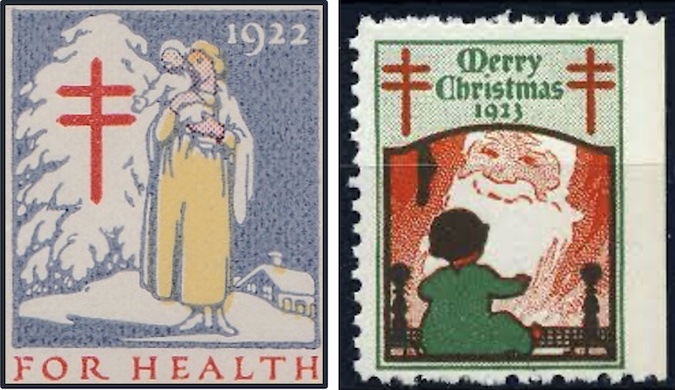18 died from tuberculosis in Orleans County a century ago
By Catherine Cooper, Orleans County Historian
Illuminating Orleans, Vol. 3, No. 1

One of the oldest known human diseases, tuberculosis was so named for the nodules or tubercles which developed on the tissues, especially the lungs. Victims suffered from debilitating lung pain, hacking, bloody coughs and fatigue.
In 1882, scientist Robert Koch discovered that the disease was not genetic or hereditary but was caused by a highly contagious myobacterium tuberculosis. A public health campaign was soon launched to educate the public on preventive measures such as covering one’s mouth or nose when coughing or sneezing.
Nurse Gillette, a graduate of Rochester General Hospital, had been appointed as Secretary of the Orleans County Tuberculosis Association in October 1920, to conduct a tuberculosis survey of the county, present educational programs on the disease and promote sales of Christmas seals.
Her report to the Board of Supervisors in 1923 reflected her diligent work towards the prevention and elimination of this debilitating disease in Orleans County:
- Visits to homes of deaths regarding disinfection: 12
- Cases of tuberculosis visited: 34
- Visits to homes on these cases: 210
She noted that nine patients had been placed in sanitoria. Since Orleans County did not have a sanitarium, patients went to either the state facility at Raybrook, the Niagara County Sanitorium, the Cattaraugus County Sanitorium or the Ontario County Sanitorium.
In addition to co-operating with physicians, social service agents and the Dept. of Health Sanitary Supervisor, the County Tuberculosis Nurse also had to employ tact and discretion in her work. A 1922 memorandum which outlined procedures for County Tuberculosis Nurses advised them to be aware of “the present status of anti-tuberculosis work in the county, local opposition, if any, and cautionary instructions.”
Nurses were also advised to wait for several days or a week before visiting a home immediately after the death or burial of a patient.
Nurse Gillette worked diligently on the educational component of her duties. In the course of 1923, she spoke at 14 Grange meetings, 27 Mother’s Meetings, and held 34 showings of health films at local playhouses and conducted the Modern Health Crusade (a health club) in 84 rural schools. She proposed that forthcoming Christmas seal money should be used for a film machine which could be used in rural districts to show the excellent health films produced by the National Tuberculosis Organization.
It is also interesting to note the role of public schools in this public health initiative 100 years ago. Nurse Gillette noted that all the schools in the county were keeping the Tuberculosis Association Weight Charts on the walls and most teachers were keeping a monthly record, while all students had been weighed at least three times. Loss of weight had been determined to be a symptom of the disease in children. She also noted that 38 rural schools had begun to provide warm lunches to students. These were new developments in the county and resulted no doubt from her assiduous information and education campaign.
(Source: Proceedings of the Orleans County Board of Supervisor’s Report, 1923)































































